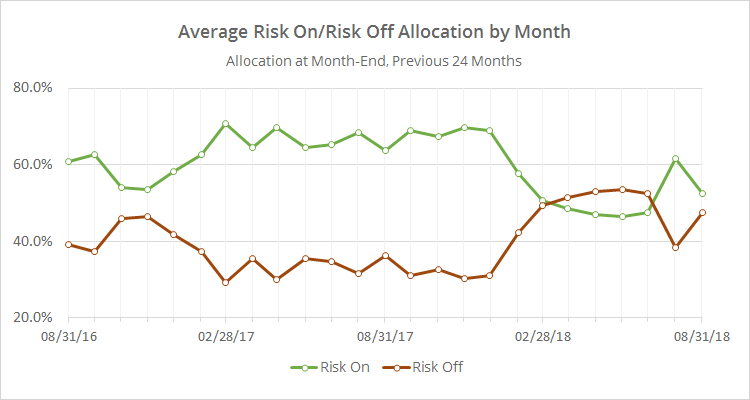This is a summary of the recent performance of a wide range of excellent tactical asset allocation strategies, net of transaction costs. These strategies are sourced from books, academic papers, and other publications. While we don’t (yet) include every published TAA model, these strategies are broadly representative of the TAA space. Learn more about what we do or let AllocateSmartly help you follow these strategies in near real-time.
Commentary:
 August was all about US asset classes, especially risk-assets like equities (ex. SPY +3.2%) and and real estate (VNQ + 2.6%). Nearly every significant US asset class fared well for the month, while nearly all non-US asset classes struggled. This has been a common theme in recent months. Note that our site focuses on USD-denominated ETFs (nearly always unhedged), so the strength of the US dollar this year is definitely a factor in that disparity. More on this in the coming week.
August was all about US asset classes, especially risk-assets like equities (ex. SPY +3.2%) and and real estate (VNQ + 2.6%). Nearly every significant US asset class fared well for the month, while nearly all non-US asset classes struggled. This has been a common theme in recent months. Note that our site focuses on USD-denominated ETFs (nearly always unhedged), so the strength of the US dollar this year is definitely a factor in that disparity. More on this in the coming week.
As one would expect, more aggressive/concentrated TAA strategies tended to win out for the month. As one would not expect, TAA closed the month by shifting to a more defensive posture, increasing US Treasury exposure, and reducing exposure to US equities. See the data dump below.
Data Dump:
With such a large pool of published strategies to draw on (45 and counting), we’re able to draw some broad conclusions about the state of TAA. The following two charts help to show trends in the asset classes that TAA as a whole is allocating to over time.
The first chart shows the average month-end allocation to categories of assets by all of the strategies that we track. For example, “US Equities” may include everything from the S&P 500 to individual stock market sectors. Defensive assets tend to be at the bottom of the chart, and offensive at the top. The data on the far right of the chart reflects where TAA stood as of the end of the most recent month.
Note the rotation into US Treasuries (with an increase from 15% to 29%), and away from US equities (45% to 39%). As previously mentioned, that’s surprising given US equities’ recent strength. FWIW, international equity exposure stands at its lowest level (1.3%) since Feb, 2016 (click for a longer view).
In the second chart below, we’ve combined average TAA allocation into even broader categories: “risk on” (equities, real estate and high yield bonds) versus “risk off” (everything else). We realize that some asset classes don’t fit neatly into these buckets, but it makes for a useful high level view.
This chart shows that, overall, TAA grew more defensive in August. We’re still in “risk on” mode, and there remains significant short-term risk to investors here if the market falters in September, but TAA is signalling a bit more caution towards this market.
We invite you to become a member for about a $1 a day, or take our platform for a test drive with a free limited membership. Put the industry’s best tactical asset allocation strategies to the test, combine them into your own custom portfolio, and then track them in near real-time. Have questions? Learn more about what we do, check out our FAQs or contact us.

